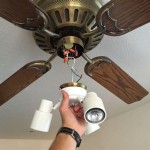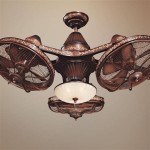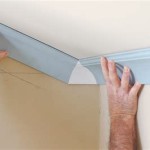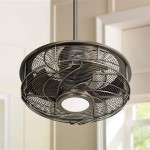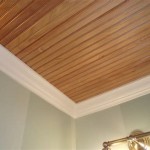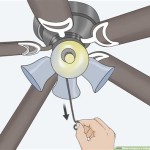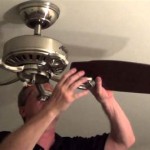Can You Clean Drop Ceiling Tiles? A Comprehensive Guide
Drop ceilings, also known as suspended ceilings, are a common feature in commercial buildings, offices, and even some residential spaces. They provide a practical solution for concealing wiring, ductwork, and plumbing, while also offering acoustic benefits. However, over time, drop ceiling tiles can accumulate dust, dirt, stains, and even mold, impacting the overall appearance and air quality of the space. This article provides a comprehensive guide to cleaning drop ceiling tiles, exploring various methods and considerations for achieving optimal results.
The feasibility and method of cleaning drop ceiling tiles depend largely on the type of tile material. Common materials include mineral fiber, fiberglass, and gypsum. Each material reacts differently to cleaning agents and techniques. Identifying the tile type is the first crucial step in determining the appropriate cleaning approach.
Before embarking on any cleaning endeavor, it is essential to assess the extent and nature of the soiling or staining. Minor dust accumulation may only require a gentle cleaning method, while more stubborn stains or mold growth may necessitate more aggressive techniques. Proper assessment prevents damage to the tiles and ensures effective cleaning.
Identifying Your Drop Ceiling Tile Material
Distinguishing between different drop ceiling tile materials is fundamental to selecting the right cleaning method. Improper cleaning can easily damage delicate materials, leading to costly replacements. Here's a breakdown of common tile types:
Mineral Fiber Tiles: These are the most prevalent type of drop ceiling tile. They are typically made from recycled paper, perlite, and other mineral materials. They are known for their sound-absorbing qualities and affordability. Mineral fiber tiles are generally porous and sensitive to moisture, making them prone to damage if over-saturated during cleaning. Look for a slightly rough, textured surface that crumbles relatively easily when pressure is applied.
Fiberglass Tiles: Fiberglass tiles are manufactured from glass fibers bonded together. They are more resistant to moisture and mold growth than mineral fiber tiles. They are also a good choice for sound absorption and are often found in environments where hygiene is a concern, such as hospitals or food processing facilities. These tiles often have a smoother surface compared to mineral fiber tiles and may have a slightly glossy appearance.
Gypsum Tiles: Gypsum tiles, also known as drywall tiles, are made from gypsum plasterboard. These tiles offer a more durable and rigid surface compared to mineral fiber or fiberglass tiles. They are often used in areas where fire resistance is a priority. Gypsum tiles are generally painted or coated to provide a finished look. These tiles tend to be heavier and less porous compared to the other two types.
Visual inspection is often the first step in identification. Check for manufacturer markings on the back of the tile. If markings are absent, a small, discreet test area can be helpful. Gently apply a moist cloth to a hidden corner of the tile. If the tile readily absorbs water and becomes soft, it is likely a mineral fiber tile. If the tile is more resistant to water and retains its shape, it is likely fiberglass or gypsum. With gypsum, scratching the surface gently in an inconspicuous spot may reveal the white gypsum beneath the paint or coating.
Effective Cleaning Methods for Drop Ceiling Tiles
Several cleaning methods can be employed for drop ceiling tiles, each with its advantages and disadvantages. The chosen method should be tailored to the tile material and the severity of the soiling. Prior to cleaning the entire ceiling, testing the chosen method in an inconspicuous area is highly recommended to ensure no damage or discoloration occurs.
Dry Dusting: For light dust and surface debris, dry dusting is the safest and simplest method. A soft-bristled brush attached to a vacuum cleaner hose is ideal. Avoid using excessive pressure, which can damage the tile surface. A microfiber cloth attached to a long-handled duster can also be effective for reaching high ceilings. Regular dry dusting helps prevent the buildup of dirt and grime, minimizing the need for more intensive cleaning in the future.
Spot Cleaning: For isolated stains, spot cleaning can be effective. A slightly damp sponge or cloth can be used to gently blot the affected area. Avoid rubbing, as this can spread the stain and damage the tile. Mild detergents can be used, but it's crucial to use them sparingly and dilute them properly. Always test the cleaning solution in an inconspicuous area first to ensure it doesn't cause discoloration or damage. For grease stains, a degreasing cleaner specifically designed for delicate surfaces may be necessary.
Wet Cleaning (Limited Application): Wet cleaning should be approached with caution, especially for mineral fiber tiles. Excessive moisture can weaken the tiles and cause them to sag or crumble. If wet cleaning is necessary, use a damp sponge or cloth with a mild detergent solution. Wring out the sponge thoroughly to avoid over-saturation. Work in small sections, and gently blot the surface. Avoid scrubbing, and immediately dry the area with a clean, dry cloth. This method is more suitable for fiberglass and gypsum tiles, which are more resistant to moisture. Ventilation is important when using wet cleaning methods to allow the tiles to dry quickly and prevent mold growth.
Specialized Cleaning Solutions: Several commercially available cleaning solutions are specifically designed for drop ceiling tiles. These solutions often contain ingredients that help to remove stains and odors without damaging the tile surface. Always follow the manufacturer's instructions carefully when using these products. Test the solution in an inconspicuous area first to ensure compatibility with the tile material.
Professional Cleaning: For large areas or heavily soiled ceilings, professional cleaning services may be the best option. Professional cleaners have the expertise and equipment to safely and effectively clean drop ceiling tiles without causing damage. They can also address mold or mildew issues safely and effectively. Requesting quotes and verifying credentials from multiple professional cleaning services is a recommended approach.
Addressing Specific Issues: Mold and Stubborn Stains
Mold growth and stubborn stains present unique challenges when cleaning drop ceiling tiles. These issues require specific approaches to ensure effective removal and prevent recurrence. Ignoring these problems can lead to health concerns and further deterioration of the ceiling tiles.
Mold Removal: Mold growth on drop ceiling tiles is often a sign of moisture issues within the building. Identifying and addressing the source of the moisture is crucial to preventing future mold growth. Small areas of mold can be treated with a diluted bleach solution (1 part bleach to 10 parts water). Always wear appropriate safety gear, including gloves, a mask, and eye protection, when working with bleach. Apply the solution to the affected area with a sponge or cloth, and allow it to sit for a few minutes before blotting dry. Ensure proper ventilation during and after the cleaning process. For larger areas of mold growth, professional mold remediation services are recommended. Replacing the affected tiles entirely may be necessary if the mold growth is extensive or deeply embedded within the tile.
Stubborn Stain Removal: Stubborn stains may require more aggressive cleaning methods. For grease stains, a degreasing cleaner specifically designed for delicate surfaces can be used. Apply the cleaner to a sponge or cloth, and gently blot the stain. Avoid rubbing, as this can spread the stain and damage the tile. For water stains, a solution of vinegar and water can be effective. Mix equal parts vinegar and water, and apply the solution to the stain with a sponge or cloth. Allow it to sit for a few minutes before blotting dry. For ink stains, rubbing alcohol can be used. Apply a small amount of rubbing alcohol to a cotton swab, and gently blot the stain. Avoid using excessive pressure, as this can spread the ink. Always test any cleaning solution in an inconspicuous area before applying it to the stain.
Preventing recurrence of stains involves addressing the underlying cause. Leaky roofs, condensation issues, and poor ventilation can all contribute to stain formation. Identifying and addressing these issues will help maintain the cleanliness and appearance of the drop ceiling.
Selecting the appropriate cleaning method hinges on the identification of the ceiling tile material and the type of soiling present. Regular maintenance significantly reduces the need for more aggressive cleaning techniques, extending the lifespan of the tiles and enhancing the aesthetics of the space. When in doubt, consulting with a professional cleaning service is a prudent approach to ensure the job is done safely and effectively.

5 Helpful Tips To Clean Your Suspended Ceiling Tiles

Acoustic Ceiling Tile Cleaning Cleaners Toronto

Vinyl Ceiling Tile Cleaning The Breakdown

Looking Up Why Keeping Ceiling Tiles Clean Matters The Abbey Cleaning Service

Ceiling Cleaning Information Ceilings Armstrong Residential

How To Remove A Ceiling Tile Easy Diy Guide

How To Clean Ceiling Tiles Our Favourite Tips Beta Board

Easy Clean Ceiling Tile Vinyl Dano Type Pvc Panel

How To Easily Update An Ugly Drop Ceiling

Clean Room Acoustical Panels For Environments Ceiling Tile
Related Posts

